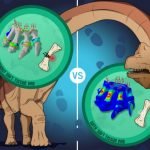Earth & Environment
How air pollution may raise depression risk in older people
Air pollution is often talked about as a threat to our lungs and hearts, but scientists are now finding that it can also affect...
How a 4,000-year-old sheep solved a long-standing plague mystery
The Black Death is one of the most infamous pandemics in human history, killing roughly a third of Europe’s population during the Middle Ages.
That...
Tattoos, toxins and the immune system – what you need to know before you...
From minimalist wrist designs to full sleeves, body art has become so common that it barely raises an eyebrow.
But while the personal meaning of...
When humans disappeared, these birds evolved different beaks
When the COVID-19 pandemic shut down the UCLA campus, students weren’t the only ones affected.
A small brown bird called the dark-eyed junco also felt...
When disasters strike, home batteries could be a lifeline
Extreme weather is placing greater strain on Australia's power grids.
In 2022, the record-breaking Northern Rivers floods blacked out almost 70,000 households.
A powerful storm in...
Biodegradable electronics may create microplastics, scientists warn
Electronics designed to disappear after use sound like a perfect solution to the world’s growing e-waste problem.
Known as transient or biodegradable electronics, these devices...
Your laundry is polluting the ocean—Scientists say this new filter can help
Every time we wash our clothes, tiny plastic fibers are released into the water.
These fibers come mainly from synthetic fabrics such as polyester, nylon...
Engineers find a way to watch desalination membranes clog in real time
As freshwater shortages worsen around the world, desalination—turning seawater into drinkable water—is becoming increasingly important.
But the technology that powers most desalination plants has a...
Scientists discover the youngest armored dinosaur ever found
For more than two decades, a small dinosaur from China has left scientists scratching their heads.
Known as Liaoningosaurus paradoxus, this strange fossil looked like...
Hot, humid weather may increase risk of kidney failure
People living in Australia's hot and humid northern regions are more likely to suffer from kidney failure than those living in cooler and less...
This brainless animal folds itself like origami, study finds
How does a living thing fold itself into complex shapes without a brain, nerves, or muscles?
A new study of one of Earth’s simplest animals...
Scientists discover 125,000-year-old elephant tracks in southeastern Spain
For the first time, scientists have uncovered fossilized footprints of large land animals preserved in ancient coastal sand dunes in the Spanish region of...
FEATURED
Air pollution may protect against skin cancer, finds new study – but the health...
Air pollution might protect against the most dangerous type of skin cancer, melanoma, a new study finds. However, it’s crucial to approach these results...
Why modern human faces are smaller than Neanderthals’
Modern humans have much smaller and softer-looking faces compared to our ancient relatives like Neanderthals.
But why is that?
A new study from the Max Planck...
No one outruns death, but hunter-gatherers come closest
Our sedentary tendencies may be robbing us of a key benefit of physical activity:
The myriad repair mechanisms that heal the minor dings and tears...
Scientists turn harmful algae into a powerful tool to combat water pollution
Harmful algal blooms (HABs) are spreading worldwide, creating toxic water conditions, killing aquatic life, and harming industries like fishing and tourism.
These blooms are fueled...
US can cut building emissions by up to 91%, the key to achieving US...
A recent study in the journal One Earth reveals that tackling building-related emissions is critical to achieving the US 2050 net-zero emissions goal.
By focusing...
Study reveals gender differences in choosing business co-founders
When starting a new business, choosing the right co-founder is crucial.
Should an entrepreneur pick a partner based on personal compatibility, or should they prioritize...
How dinosaurs carried their enormous weight
Scientists have cracked an enduring mystery, discovering how sauropod dinosaurs – like Brontosaurus and Diplodocus – supported their gigantic bodies on land.
A University of...
Why simplicity matters: New study reveals our love for easy solutions
A new study from the University of Waterloo has discovered why people prefer simple explanations and straightforward ways to achieve goals.
It turns out our...
























